The 1944 nickel’s value ranges from $1.50-$5 for circulated coins to $10-$25+ for uncirculated examples. High-grade specimens (MS63+) can fetch $32-$700, while rare “Full Step” coins command $2,000-$14,000+. All 1944 nickels contain 35% silver, providing a base melt value of approximately $1.70. Value depends primarily on condition, mint mark (D, S, or P), and errors like repunched mintmarks or off-center strikes. The “Full Step” designation, showing clear parallel steps on Monticello, significantly increases value for collectors seeking premium examples.
Most pocket change gets spent without a second thought, but that worn 1944 nickel sitting in your drawer could be worth anywhere from $1.50 to over $14,000. Unlike standard Jefferson nickels, wartime versions contain 35% silver and feature unique minting characteristics that make them valuable to collectors. Understanding mint marks, grading standards, and error varieties is essential to determining whether you’re holding common silver or a rare numismatic treasure.
The Wartime Silver Composition That Changed Everything
During World War II, the United States Mint modified nickel composition to preserve strategic metals for the war effort. From mid-1942 through 1945, nickels contained 56% copper, 35% silver, and 9% manganese—a drastic departure from the standard copper-nickel blend. This silver content gives every 1944 nickel an intrinsic melt value of approximately $1.70 based on current precious metal prices.
You can immediately identify wartime nickels by the large mint mark positioned above Monticello on the reverse. Regular Jefferson nickels place mint marks near the rim, but wartime pieces display oversized “P,” “D,” or “S” letters prominently on the building’s dome. Philadelphia coins marked with “P” were unprecedented, as this mint hadn’t marked five-cent pieces before 1942. This visual identifier makes authentication straightforward even for beginning collectors.
The Philadelphia Mint produced 119,150,000 nickels in 1944, Denver struck 32,309,000, and San Francisco contributed 21,640,000 pieces. These mintage figures seem substantial, but survival rates in high grades tell a different story—most circulated heavily during wartime economic activity, leaving pristine examples remarkably scarce.
Understanding the Mint Mark Value Hierarchy
1944-P Philadelphia Nickels
Philadelphia pieces represent the most common variety with the highest mintage. Circulated examples in Good to Very Fine condition typically sell for $1.50 to $3.00, primarily reflecting silver content. Uncirculated specimens show dramatic value increases:
| Grade | Estimated Value |
|---|---|
| MS-60 | $10-$15 |
| MS-63 | $18-$25 |
| MS-65 | $45-$75 |
| MS-66 | $125-$200 |
| MS-67 | $450-$850 |
A certified MS-67 1944-P sold through Heritage Auctions in 2022 for $780, demonstrating strong collector demand for premium examples. Full Step varieties (designated FS or 6FS) command significant premiums—an MS-65 FS can reach $300-$500, while MS-66 FS specimens approach $1,500.
1944-D Denver Nickels
Denver’s lower mintage creates moderate scarcity advantages. Circulated pieces trade for $1.75 to $4.00, slightly above Philadelphia counterparts. Uncirculated values follow this pattern:
| Grade | Estimated Value |
|---|---|
| MS-60 | $12-$18 |
| MS-63 | $22-$32 |
| MS-65 | $65-$110 |
| MS-66 | $200-$350 |
| MS-67 | $900-$1,600 |
Denver strikes often exhibit weaker details on Monticello’s steps due to die wear, making Full Step examples particularly rare. A 1944-D graded MS-66+ FS sold for $3,120 in a 2023 Stack’s Bowers auction, highlighting the premium collectors pay for sharp architectural details.
1944-S San Francisco Nickels
The lowest mintage makes San Francisco pieces the most desirable regular strikes. Worn examples bring $2.00 to $5.00, while uncirculated coins command substantial premiums:
| Grade | Estimated Value |
|---|---|
| MS-60 | $15-$22 |
| MS-63 | $32-$50 |
| MS-65 | $100-$175 |
| MS-66 | $400-$700 |
| MS-67 | $2,000-$4,500 |
San Francisco produced some of the finest strikes with exceptional luster and detail. Full Step specimens reach extraordinary values—an MS-67 FS realized $14,100 at a Heritage Auctions sale in 2021, setting a benchmark for the variety. Even MS-65 FS examples consistently trade between $2,000 and $3,500.
Critical Error Varieties Worth Examining
Repunched Mint Marks (RPM)
Repunched mint marks occur when the mint mark punch strikes twice in slightly different positions, creating visible doubling. Several 1944-D RPM varieties exist, with the most dramatic showing strong doubling of the “D” mint mark. Minor RPM varieties in circulated condition add $10-$25 to base value, while pronounced examples in MS-63 or better can reach $150-$400. A 1944-S with dramatic mint mark repunching sold for $625 in MS-64 condition during a 2023 GreatCollections auction.
To identify repunched marks, examine the mint mark under 5x to 10x magnification. Look for notches, secondary impressions, or thickened portions of the letter indicating multiple punch applications.
Off-Center Strikes
Off-center errors happen when the planchet (blank coin) isn’t properly positioned in the striking chamber. Value depends on displacement percentage and whether the date remains visible:
- 5-10% off-center with full date: $75-$150
- 15-25% off-center with full date: $200-$450
- 30-50% off-center with full date: $500-$1,200
- 50%+ off-center (date may be partial): $1,500-$3,000+
A spectacular 1944-P struck 60% off-center sold for $2,640 in 2022. The dramatic visual impact and rarity of surviving off-center wartime nickels make them highly collectible even in lower technical grades.
Die Cracks and Cuds
Die cracks form when striking dies develop fractures from repeated use. Minor cracks add modest premiums of $5-$15 in circulated grades. Major cracks crossing significant design elements can bring $30-$100. Die cuds—raised blobs of metal where pieces of the die broke away—are particularly valuable. A 1944-S with a bisecting die crack across the entire obverse graded MS-64 realized $475 at auction.
The most dramatic variety is the “retained cud,” where a broken die piece remains partially attached, creating unusual raised areas. These can command $200-$800 depending on size and location.
Double Die Varieties
True doubled dies result from hub impressions shifting during die production, creating design element doubling. While 1944 nickels don’t feature major doubled die varieties comparable to famous examples from other years, minor doubling on lettering exists. Subtle doubling on “LIBERTY” or “IN GOD WE TRUST” adds $25-$75 in uncirculated condition.
Wrong Planchet Errors
Extremely rare wrong planchet errors occur when 1944 dies strike planchets intended for other denominations. A 1944 nickel struck on a cent planchet would weigh approximately 3.11 grams instead of the correct 5.00 grams. Such errors typically sell for $3,000-$8,000 when authenticated. Similarly, nickels struck on dime planchets (containing 90% silver) are extraordinary rarities worth $5,000-$12,000.
The Full Step Designation Premium
The “Full Step” or “Full Steps” designation refers to the five or six horizontal steps visible on Monticello’s portico. Most 1944 nickels show incomplete steps due to weak striking pressure or die wear. Grading services designate coins showing complete, unbroken step lines as “5FS” or “6FS” depending on how many steps display full separation.
For 1944-P nickels, approximately 2-3% of mint state examples qualify for Full Step designation. The percentage drops to 1-2% for Denver strikes and improves slightly to 3-4% for San Francisco pieces. This scarcity creates dramatic premiums:
A standard MS-65 1944-S might sell for $150, while the same grade with Full Step designation reaches $2,500-$3,500. The jump from MS-66 to MS-66 FS is equally dramatic—$650 versus $6,000-$8,500. In MS-67 grades, Full Step 1944-S nickels represent condition rarities commanding five-figure prices.
Collectors seeking Full Step coins should examine certified examples from PCGS, NGC, or ANACS. These services verify step completeness during the grading process, providing confidence in the designation.
Authentication and Grading Considerations
Professional grading significantly impacts market value for 1944 nickels, particularly in mint state grades above MS-64. Raw (uncertified) coins often sell at 30-50% discounts compared to identical certified examples due to authenticity and grade uncertainty.
When examining raw 1944 nickels, verify these authentication points:
Weight verification: Wartime nickels should weigh 5.00 grams (±0.03g tolerance). Scales accurate to 0.01 grams are essential, as counterfeits sometimes use incorrect alloys.
Diameter and thickness: Specifications are 21.20mm diameter and 1.95mm thickness. Significant deviations indicate problems.
Magnetic testing: The 56% copper, 35% silver, 9% manganese composition is weakly magnetic due to manganese content. Strong magnetic attraction suggests counterfeit composition, while no magnetic response at all also raises concerns.
Surface characteristics: Genuine silver-content nickels develop distinctive toning patterns—blues, grays, and light golden hues. Artificially toned counterfeits often show unnatural rainbow colors or chemically induced streaking.
For coins potentially worth $500 or more, professional certification costs ($35-$75 depending on service level) provide insurance against counterfeits and establish market-accepted grades. Major auction houses and serious collectors strongly prefer certified coins for transactions above $300.
Market Trends and Investment Potential
The 1944 nickel market shows steady appreciation driven by silver content, World War II historical interest, and decreasing availability of high-grade examples. From 2018 to 2024, MS-65 prices increased approximately 35-45% across all mint marks, outpacing general inflation.
Silver price fluctuations create a value floor. When silver trades at $24 per troy ounce, the $1.70 melt value supports base pricing. During silver spikes above $30, even heavily worn specimens trade at $2.50-$3.50 purely for metal content.
Registry set competition drives demand for premium examples. Collectors building complete Jefferson nickel sets require high-grade 1944 pieces, particularly Full Step varieties. This sustained demand creates price stability—unlike speculative modern coins that experience boom-bust cycles, wartime nickels maintain consistent collector interest.
The most promising investment opportunities exist in the MS-65 to MS-66 grade range, particularly for Full Step examples. These grades balance availability (occasional auction appearances) with scarcity (limited populations in holder censuses). An MS-65 FS 1944-S purchased for $2,200 in 2019 would sell for approximately $3,000-$3,500 in 2024, representing 36-59% appreciation.
Maximizing Value When Selling
If you’ve identified a potentially valuable 1944 nickel, consider these selling strategies:
For coins worth under $50: Local coin shops offer immediate payment but typically pay 60-75% of retail value. Online marketplaces like eBay reach broader audiences but involve fees (12-15% combined) and require photography skills to attract buyers.
For coins worth $50-$500: Consignment through established dealers provides expertise in pricing and access to collector networks. Expect 10-20% commission but benefit from professional presentation and authentication advice.
For coins worth over $500: Major auction houses (Heritage, Stack’s Bowers, GreatCollections) attract serious collectors willing to pay premium prices. Auction fees typically run 10-20%, but competitive bidding often exceeds conservative estimates. A well-cataloged 1944-S MS-66 FS will attract multiple registry set collectors, potentially driving the final price above comparable sales.
Timing matters—auctions scheduled during major coin shows (January FUN Show, August ANA convention) attract more bidders and typically achieve stronger prices than slow summer sales.
Building Your Collection Strategically
For collectors assembling 1944 nickel varieties, these approaches balance cost and completeness:
Budget approach ($50-$150 total): Acquire circulated examples of each mint mark in Fine to Very Fine condition ($5-$8 each), plus one lower-grade mint state piece (MS-60 to MS-62) showcasing original luster. Add one minor error variety like a die crack or weak RPM ($20-$40).
Intermediate approach ($500-$1,500 total): Target MS-63 to MS-64 examples of each mint mark ($75-$200 each) with strong eye appeal. Include one Full Step coin in MS-63 or MS-64 ($800-$1,200 for 1944-P or 1944-D). Add a quality error like a clear off-center strike or pronounced RPM ($150-$400).
Advanced approach ($5,000+ total): Pursue MS-65 or better examples with Full Step designations. Focus on original, untoned coins with exceptional luster. Include significant errors and consider upgrading to MS-66 FS for key dates. This creates a museum-quality set with strong appreciation potential.
Regardless of budget, prioritize certified coins in higher grades and raw coins for circulated examples where authentication risk is minimal. Join online communities like the Collectors Universe forums or NGC Collectors Society to learn from experienced collectors and stay current on market developments.
You may be interested:
- 1859 Indian Head Penny Coin Value Complete Errors List And No Mint Mark Worth Guide For Collectors
- 1911 V Nickel Coin Value Guide Complete Errors List And No Mint Mark Worth Today
- 1902 Dime Coin Value Complete Errors List With O S And No Mint Mark Worth Guide
- 1788 Quarter Coin Value Complete Guide Errors List And D S P Mint Mark Worth Revealed
- 1776 To 1976 Bicentennial Half Dollar Coin Value Complete Errors List And What Your D S And No Mint Mark Coins Are Actually Worth
- 1990 Penny Coin Value Errors List How D S And No Mint Mark Pennies Are Worth Thousands Of Dollars

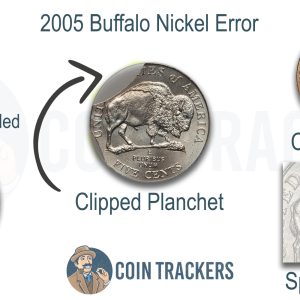
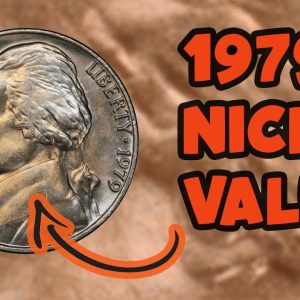
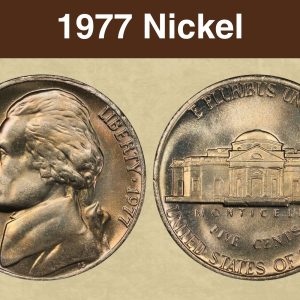
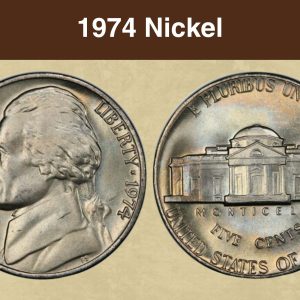
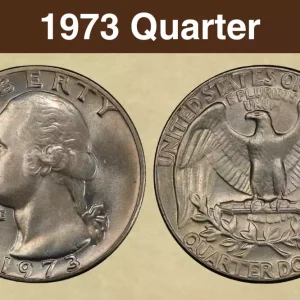
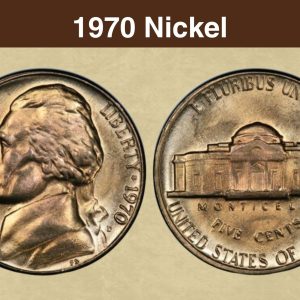
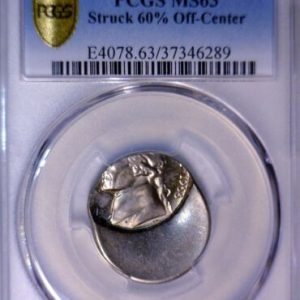
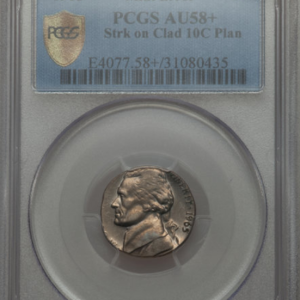
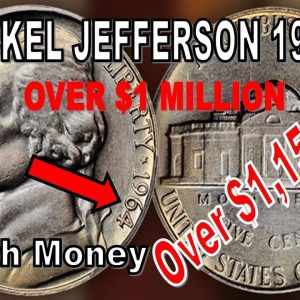
How much is a 1944 S mint nickel worth?
A 1944-S nickel’s value varies widely, from about $1.50 to $5 in circulated condition up to $10 to $25 or more in uncirculated condition. High-grade examples, particularly those with “Full Step” details, can be worth thousands of dollars, while rare error coins can be even more valuable. The coin’s composition, which includes 35% silver, gives it a baseline value, but its condition and minting errors are the primary factors for significant value increases.
What makes a 1944-P nickel valuable?
Value of 1944-P Jefferson War Nickel Created with excellent eye appeal, the 1944-P Jefferson War Nickel can often seem prooflike. Try to avoid the coins that have rough surfaces and scratched die. In the highest grades, these coins can go for a good deal of money.
What is the error on the 1944 nickel P?
This is a 1944-P Jefferson Wartime Nickel transitional mint error. It was struck on a copper-nickel planchet rather than the intended Wartime silver alloy planchet, which did not have nickel composition. The composition should have been silver, manganese and copper.
What is the 1994 P special nickel?
The 1994-P Special Uncirculated has the second lowest mintage of any Jefferson nickel. The matte finish technique had not been used since 1922. It was the first time it had been utilized on a Jefferson Nickel.